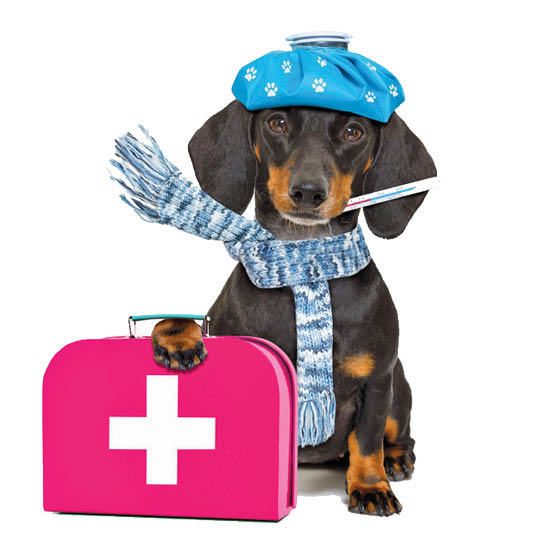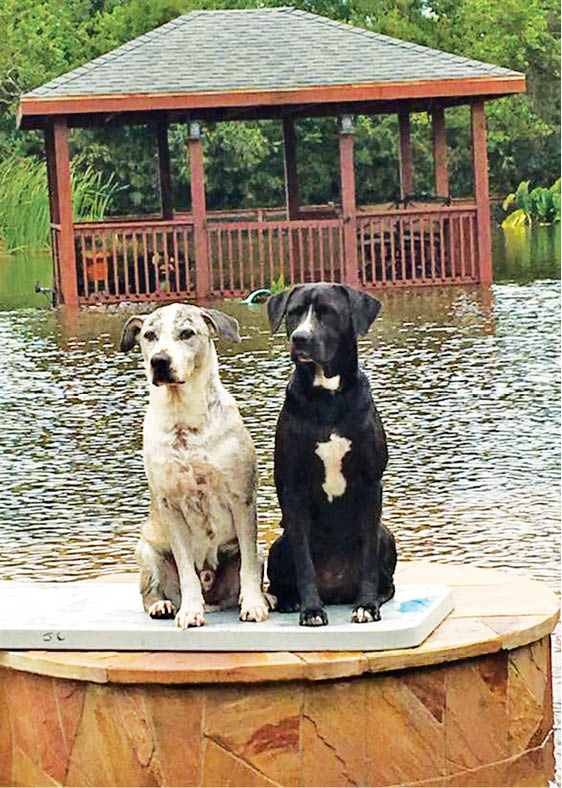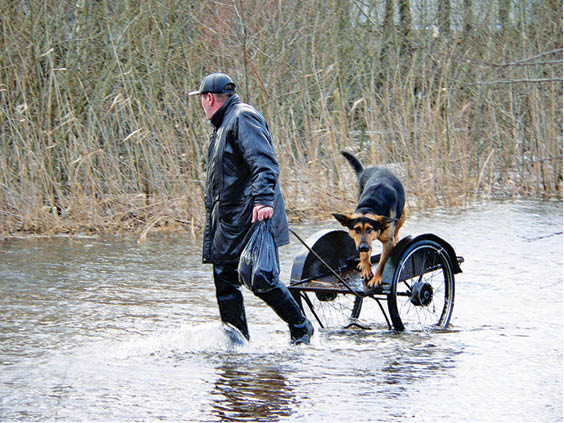Being Prepared Could Save Your Pet’s Life In An Emergency!
 July 26, 2005 is a day Mehernaz will never forget. Stuck at office whilst Mumbai was submerged, Mehernaz could not get home for the next two days. Sitting at her desk, miles away from home, she worried about her two dogs alone at home – without food, electricity or water. By the time she reached them on the third day, they were famished, dehydrated and traumatised. After that day, they refuse to leave her and panic when she leaves home, thinking they will never see her again. Since then, Mehernaz is not taking any chances and now has a back up plan in case disaster strikes again. She has put aside food, water, clothing and other emergency supplies in a safe place and left the house-keys with a trusted neighbour who will take care of the dogs, should the need arise again.
July 26, 2005 is a day Mehernaz will never forget. Stuck at office whilst Mumbai was submerged, Mehernaz could not get home for the next two days. Sitting at her desk, miles away from home, she worried about her two dogs alone at home – without food, electricity or water. By the time she reached them on the third day, they were famished, dehydrated and traumatised. After that day, they refuse to leave her and panic when she leaves home, thinking they will never see her again. Since then, Mehernaz is not taking any chances and now has a back up plan in case disaster strikes again. She has put aside food, water, clothing and other emergency supplies in a safe place and left the house-keys with a trusted neighbour who will take care of the dogs, should the need arise again.
Disaster can strike when least expected. If you think you live in a safe area and will not be affected, you’re mistaken. Staying prepared is the best way to ensure you’re pets will be taken care of during unforeseeable disasters. Disaster preparedness for your dog can be as easy as preparing for yourself and your family. The following tips help you prepare for any eventuality:
BEFORE THE DISASTER
It helps to have an Evacuation Plan. Make a list of places you can go to in the event of an emergency evacuation. It could be a friend or relative’s home or a hotel that will allow your pet in for the next few nights. Don’t wait for disaster to strike to find out you have no place to shelter you and your dogs.
Appoint a Caretaker to care for your pets, in case you’re not home when disaster strikes. It could be a neighbour, family member or friend. Make sure the person has a key to your home, is familiar with your pets and knows where your evacuation and first-aid supplies are kept. It should be someone who is generally home during the day while you are at work or has easy access to your home.
Keep a first-aid kit ready and make sure that everyone in the family knows where it is. This kit should be clearly labelled and easy to carry.
WHEN DISASTER STRIKES
If your family and pets must wait out a storm or another disaster at home, identify a safe area of your home where you can all stay together. Keep dogs on leashes or in carriers, and make sure they are wearing identification tags on their collars. Keep medications, a supply of pet food and water inside watertight containers, along with your other emergency supplies.
If you are experiencing the tremors of an earthquake, or the floodwaters rise, don’t wait to be told to evacuate. The first and foremost thing to do is get a hold of your pet and go outside to a clear space – away from structures that could fall on you. Pets often sense danger in advance, and could get frightened and run away or hide or even bite out of fear. Keep your dog on a leash or in a carrier to keep it safe.
Never leave your pet behind in your house or tied up during such crises. Even if you think you will only be gone for a few hours, take your dog with you. Once you leave, you may not be able to go back for days if things take a turn for the worse. Animals left behind in a disaster can easily be injured, lost or killed. Animals turned loose to fend for themselves are likely to become victims of exposure, starvation, predators, contaminated food or water, or accidents. Leaving dogs tied or chained outside in a disaster is a death sentence. Remember, if it isn’t safe for you, it isn’t safe for your pets.
DISASTER SUPPLY CHECKLIST
- Several wallet sized photos and descriptions of your pets to help others identify them in case you and your pets get separated and/or to prove that they are yours.
- Blankets or warm clothing to keep a pet safe and warm, if it gets wet or ill.
- A list of important telephone numbers, including emergency services such as ambulance, police and fire. Your list should also contain phone numbers of your veterinarian, a neighbour / friend who can help in an emergency
- A first aid kit (ask your vet to help you put one together depending on your dog’s needs). Typically it should include Paracetamol syrup, thermometer, cotton, bandages, antiseptic cream, iodine / Savlon solution for cleaning wounds, syringe for giving medicine, and gloves and mask to be worn by the owner when treating the pet, to avoid zoonotic diseases.
- Your dog’s medical records and medicines.
- Food and water for at least three days for each pet (food and medications need to be rotated out of your emergency kit, to prevent them from passing their expiry date).
- Sturdy leashes, harnesses, and collars to transport pets safely and to ensure that your pets can’t escape. In the case of small dogs, a pet carrier would be the best way to transport them safely.
- Pet beds and toys, if you can easily take them, to reduce stress. Other useful items include newspapers, paper towels, plastic garbage bags, disinfectant, flashlight and matchbox.
- Make sure your dog is wearing a sturdy, well-fitting collar and has an ID tag attached, carrying the dog’s name, your contact numbers either laminated or written with indelible ink. It is also wise to include a number that is not of your home, but of a friend in another city who can be relied on to help.
DISASTER SUPPLY CHECKLIST
THE DISASTER
If for some unfortunate reason, your pet escapes or is lost, put up his information and photos at all animal hospitals, shelters and veterinary clinics, and show it to the animal rescue teams that visit your area, so they can be on the lookout for your dog.
The threat of disease is especially strong after a flood. Make sure your pets only drink water you have bottled or boiled. At such a time even tap water may not be safe. Do not allow them to drink from unsafe sources. Keep your pets well away from standing pools of water.
After a disaster, do not allow your pets to roam loose. Familiar landmarks and smells might be gone, and your pet can get disorientated and even lost. The environment may also now contain hazardous waste such as chemicals, carrion, strewn garbage, leaking sewage pipes and broken glass or wood. Be sensible and walk your dog on a leash till things settle down.
Be patient with your pets after a disaster. As unnerving as it is for us after a disaster, it is worse for our pets. Give them plenty of love and try to get them back into their normal routines as soon as possible. In some cases, behaviour problems may result from the stress of the situation; seek professional help if the problems persist or if your pet seems to be having any health problems. In a situation where stress will be high, you’ll need your best friend to lean on and take care of you. Take care of him too.
Healing Paws: Anyone who has cared for a pet can list the benefits of sharing life with one. There’s nothing quite like petting a purring cat nestled on your lap or returning home to a joyous welcome from a tail-wagging dog. But our pets are more than that. They also serve as healers, particularly in times of tragedy. Caring for another provides a sense of purpose and fulfilment and lessens feelings of loneliness and isolation in people. Even those little things such as the cat meowing for his morning meal or the dog crawling into bed with you, remind us that life goes on and that we have much to live and be thankful for.
- The Dark Side Of Pampered Pets: Is Your Kindness Harming Your Dog? - 16 March2024
- Kids And Preventing Dog Bites - 18 March2023
- Ordinary Dogs With Extraordinary Jobs - 13 August2022
